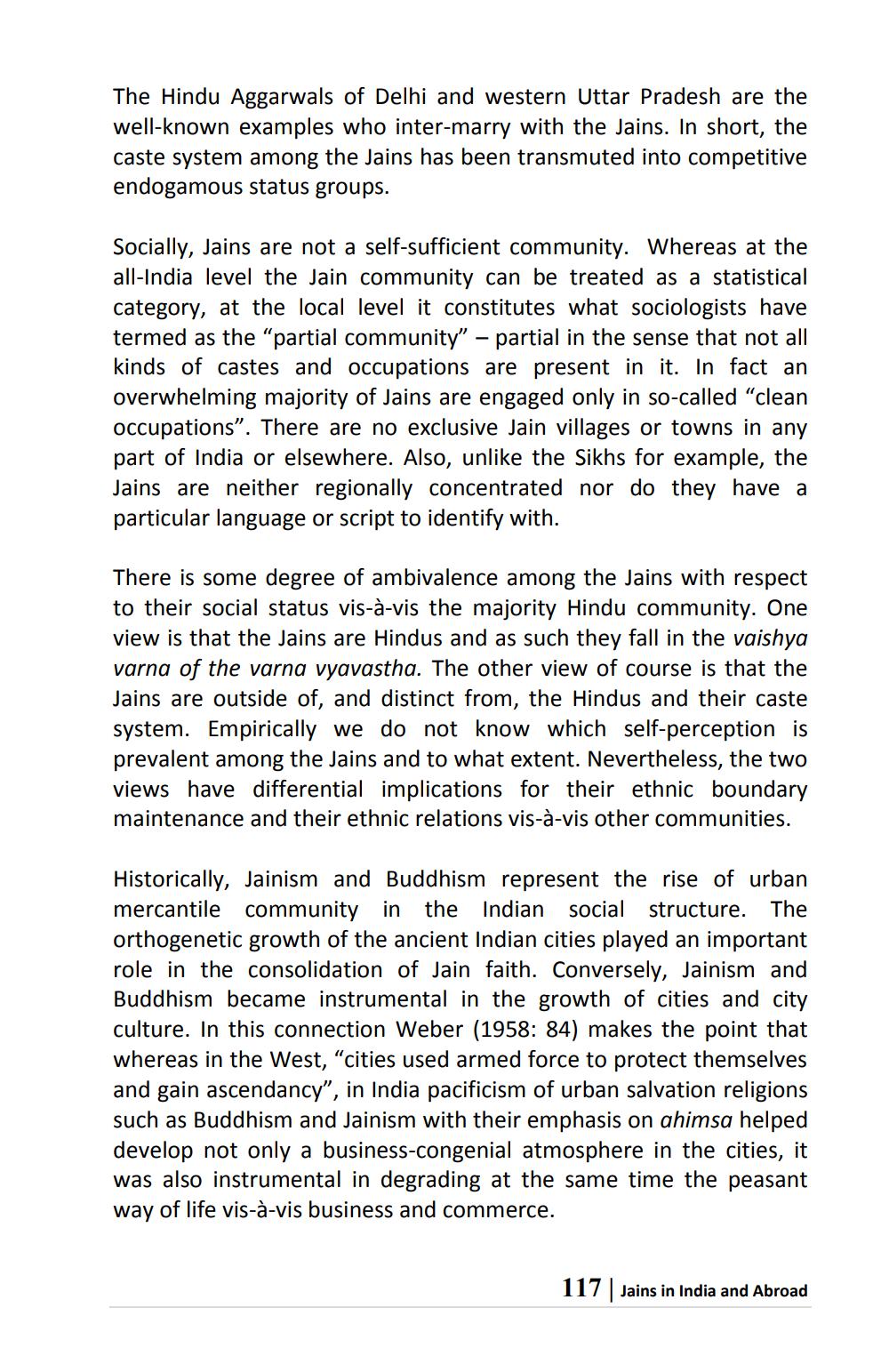________________
The Hindu Aggarwals of Delhi and western Uttar Pradesh are the well-known examples who inter-marry with the Jains. In short, the caste system among the Jains has been transmuted into competitive endogamous status groups.
Socially, Jains are not a self-sufficient community. Whereas at the all-India level the Jain community can be treated as a statistical category, at the local level it constitutes what sociologists have termed as the "partial community" - partial in the sense that not all kinds of castes and occupations are present in it. In fact an overwhelming majority of Jains are engaged only in so-called "clean occupations". There are no exclusive Jain villages or towns in any part of India or elsewhere. Also, unlike the Sikhs for example, the Jains are neither regionally concentrated nor do they have a particular language or script to identify with.
There is some degree of ambivalence among the Jains with respect to their social status vis-à-vis the majority Hindu community. One view is that the Jains are Hindus and as such they fall in the vaishya varna of the varna vyavastha. The other view of course is that the Jains are outside of, and distinct from, the Hindus and their caste system. Empirically we do not know which self-perception is prevalent among the Jains and to what extent. Nevertheless, the two views have differential implications for their ethnic boundary maintenance and their ethnic relations vis-à-vis other communities.
Historically, Jainism and Buddhism represent the rise of urban mercantile community in the Indian social structure. The orthogenetic growth of the ancient Indian cities played an important role in the consolidation of Jain faith. Conversely, Jainism and Buddhism became instrumental in the growth of cities and city culture. In this connection Weber (1958: 84) makes the point that whereas in the West, "cities used armed force to protect themselves and gain ascendancy", in India pacificism of urban salvation religions such as Buddhism and Jainism with their emphasis on ahimsa helped develop not only a business-congenial atmosphere in the cities, it was also instrumental in degrading at the same time the peasant way of life vis-à-vis business and commerce.
117 Jains in India and Abroad




